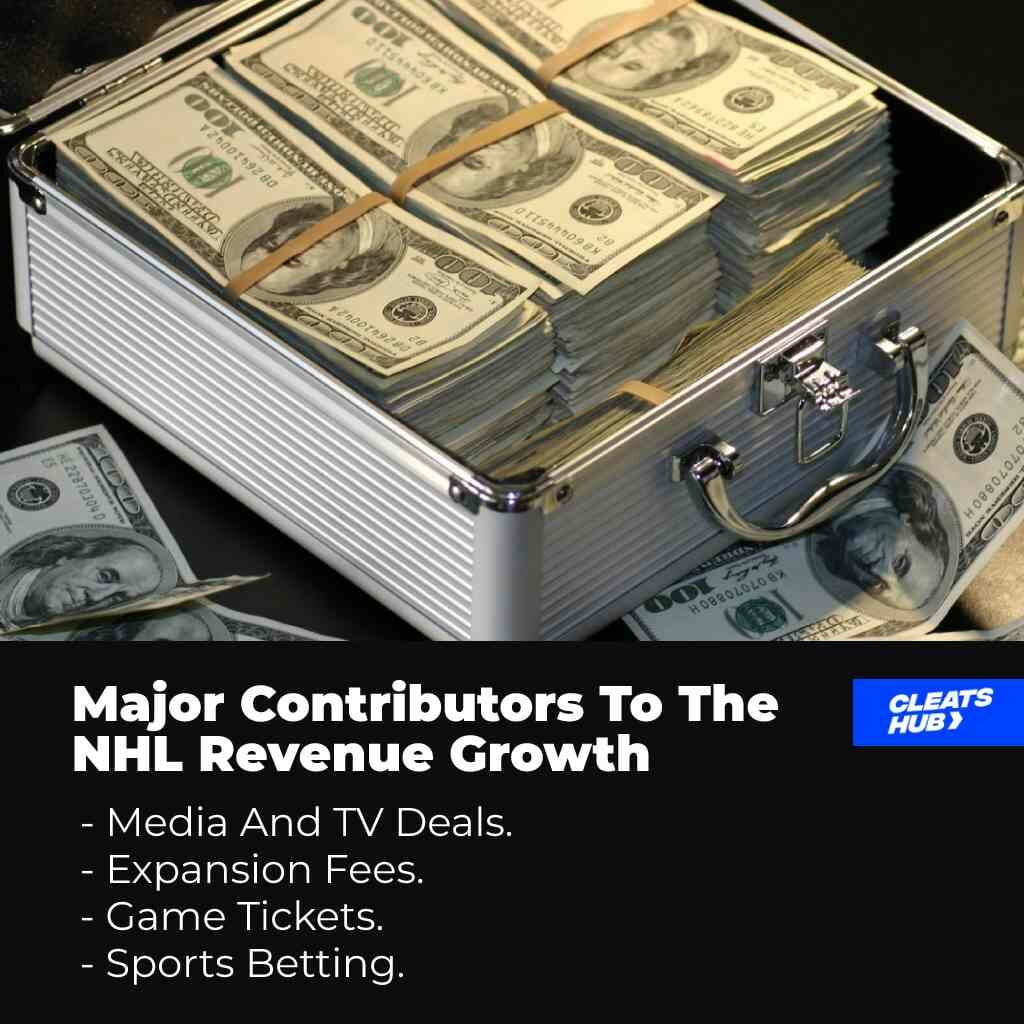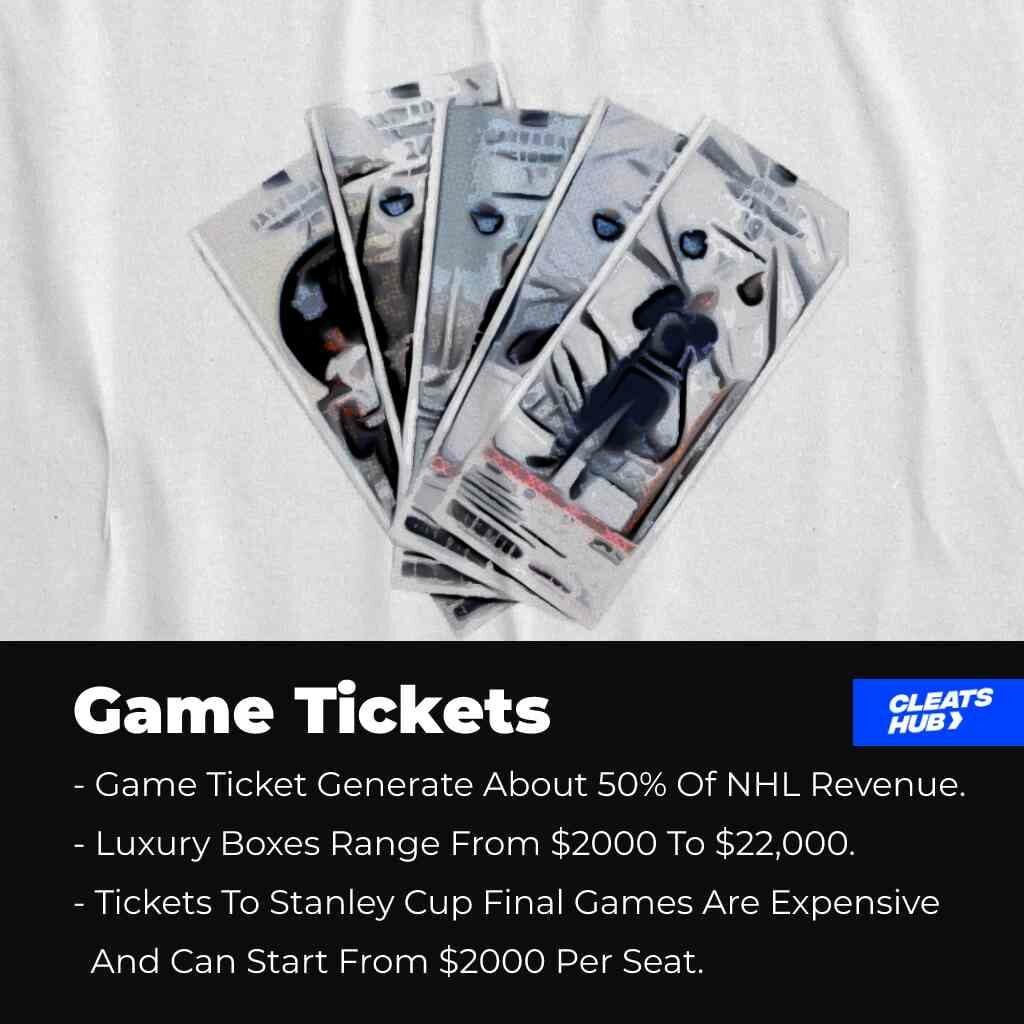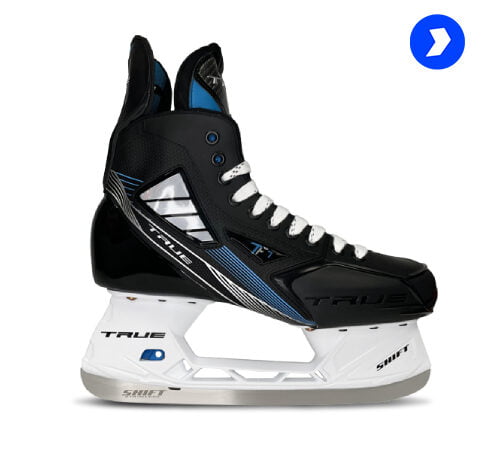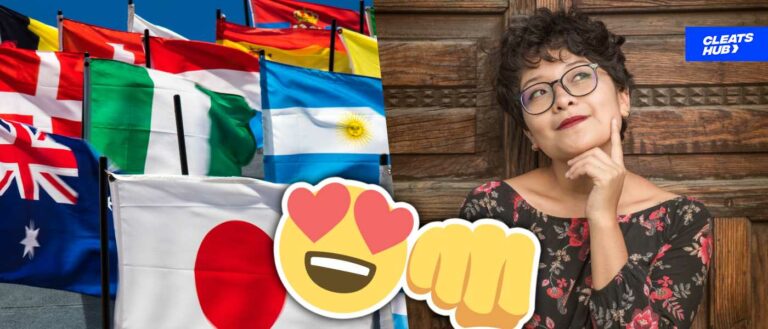Annual NHL Revenue: Revenue Source & Comparison
The NHL is the largest ice hockey league in the world and one of the richest sports leagues in North America. Currently, the NHL’s revenue presently seats at around $5 billion.
The NHL’s yearly income is derived from the sources it considers to be revenue. We shall examine the numerous NHL revenue sources in this post. We’ll also reveal the primary revenue streams and contrast the revenue of the NHL with that of other sports leagues.
What Is The Annual NHL Revenue For The 2022-23 Season?

According to NHL Commissioner Gary Bettman, the league’s yearly income is anticipated to be in the range of $5.7 billion for the 2022–2023 season. This prediction is predicated on the 2021–22 season’s performance, which saw a record-breaking $5.3 billion in revenue earned.
Every new season has seen a comparatively steady rise in income for the NHL. The NHL lockout seasons, meanwhile, are anomalies, since those seasons witnessed a significant reduction in the league’s hockey-related revenue (HRR).
The HRR of the NHL has significantly increased as a result of the new sponsorship and television deals the NHL just inked with ESPN.
What Counts As Revenue In The NHL?
Any activities that are directly or indirectly related to NHL games and generate revenue for the league are referred to as hockey-related revenue (HRR). A detailed list of the sources that are included in the calculation of NHL income is provided in the NHL and NHLPA’s revised Collective Bargaining Agreement.
- NHL Regular Season and Playoff Gate Receipts
- Pre-Season Games
- Special Games (International Exhibition Games, etc.)
- NHL National, International, and National Digital Broadcasts
- NHL Networks
- Local Cable Television Broadcasts
- Local Pay-Per-View, Satellite, and Other Broadcasts
- Local Over-the-Air Television Broadcasts
- Local Radio Broadcasts
- Club Internet
- Publications
- In-Arena Novelty Sales
- Non-Arena Novelty Sales
- Concessions
- Luxury Boxes/Suites
- Club/Premium Seats
- Fixed Signage/Arena Sponsorships
- Temporary Signage/Club Sponsorships
- Parking tickets
- Rink Board Advertisements
What Does Not Count As Revenue?
There are specific revenue generators in the NHL that are not counted as hockey-related revenue. Therefore, they are not included in the annual revenue for a season. Also, since these sources are not recorded as HRR, they are not shared among players and are kept among the league and its owners.
Some of the revenue sources that don’t count as HRR include:
- Money teams make from waiver claims on players
- Money NHL makes from moving teams and granting expansion franchises
- Revenues that teams receive from operating other clubs, such as AHL affiliates
- Fines from players and teams
- Money teams make from financial transactions (Loans, Interest Income, Or Investments)
- Sale and leasing of real estate.
NHL Revenue By Year
The annual NHL income over the previous 10 years is displayed in the table below. Every NHL season’s income growth has been demonstrated to be progressive, with projections for lockout seasons. The NHL is expected to earn the most money to date during the 2022–23 season.
Nonetheless, it is anticipated that the NHL will have a more notable gain in earnings because of the new broadcast arrangement with ESPN and other newly-inked NHL agreements.
| NHL Season | Annual NHL Revenue ($ billion) |
| 2012-13 | 2.63 |
| 2013-14 | 3.7 |
| 2014-15 | 3.98 |
| 2015-16 | 4.1 |
| 2016-17 | 4.43 |
| 2017-18 | 4.86 |
| 2018-19 | 5.09 |
| 2019-20 | 4.37 |
| 2020-21 | 2.33 |
| 2021-22 | 5.3 |
| Average | 4.08 |
The average revenue of the NHL over the past ten years is $4.08 billion. Most of the revenue from the data above has been around $4 billion, with the revenue peaking at $5 billion occasionally.
Major Contributors To NHL Revenue Growth

Although the NHL has various means of revenue generation, ranging from sponsorship to ticket sales and advertisements, here are some of the major sources of revenue in the NHL.
Media And TV Deals
The NHL presently earns about $1 billion annually (20–25% of its total revenue) from media partnerships with American and Canadian broadcast and media organizations. The broadcasting media outlet has the right to transmit these games on their channel thanks to these agreements.
- NHL TV Deal In Canada
The largest broadcast media contract in NHL history was signed by the NHL and Rogers Communication in 2013. The 12-year, $5.232 billion media contract was reached by the media company, totaling $436 million per year for the NHL. To date, this is still the largest media agreement the NHL has ever inked, even after 10 years. Also, it is Canada’s biggest sports media agreement. - NHL TV Deal In The United States
Although Canada has the largest single media agreement, the NHL negotiated some U.S. national TV deals for the 2021–22 season, which outperformed Canada. Earlier, in 2011, the NHL and NBC agreed to a $2 billion media pact that would last for ten years. The transaction was broken down into annual payments of about $200 million.
Nevertheless, the NHL secured two deals with Turner Sports and ESPN after the agreement’s expiration in 2021. Turner Sports and ESPN both inked 7-year contracts for $225 million and $400 million per year for the first seven years of their respective agreements. In the end, this sums up the deals from US media deals to a total of $625 million.
Sports Betting
The NHL is venturing into new territory with sports betting, but it has the potential to pay out in the long term. The NHL and MGM Sports have agreed to a relationship, which enables the latter to utilize the league’s and its team’s logos on advertising boards.
The multi-year agreement, which is expected to bring in up to $216 million for the league in 2018, has been successful, as seen by the growth in Vegas Golden Knights income.
NHL Expansion Fee

An ice hockey club must pay the NHL expansion fee in order to be added to the list of franchises in the league. If just expansion fees were included in the HRR, they would represent a sizable source of revenue for the NHL due to their extremely high cost.
The league determines expansion fees, and they are unsharable with players. Several players believe that this issue will have to be revisited any time the NHL and NHLPA enter into a new collective bargaining agreement.
The NHL received expansion fees from the two newest clubs, the Seattle Krakens and the Vegas Golden Knights, in the amounts of $650 million and $500 million, respectively.
Game Tickets

It is not exaggerated to say more than 50% of the NHL revenues come from sales of tickets in the form of game tickets and parking tickets. The price of a ticket to a regular NHL game ranges from $30 to $300, depending on the teams and location of the game.
Also, the price for seating locations differs as tickets for a seat closer to the ice rink are more expensive than seats at the top. This price, multiplied by the number of attendants in each arena and the 1,312 games in a regular NHL season, makes up a substantial portion of the NHL revenue.
- Parking Tickets
Parking tickets in NHL arenas can be as low as $15 and as high as $45 or more, depending on the NHL arena. - Luxury Box
Arenas in the NHL also have what is known as a luxury box. These luxury boxes are exclusive suites that offer premium services and comfort to NHL players, such as food, alcoholic beverages, a personal attendant, etc.
They are a separate accommodation for those who want comfort, as they ensure the game. The price for a luxury box in an NHL arena varies based on the arena, game type (regular, Stanley finals, All-Star Game, etc.), and the number of guests.
These boxes may range from $2000 to as high as $22,000 or higher. Every NHL arena has these luxurious boxes in multiple locations within the arena.
- Stanley Cup Finals
Tickets for the Stanley Cup finals are the most expensive game tickets in the NHL. The finals comprise seven games, and the ticket to each game may range from $700-$3000 per seat. The final game of the Stanley Cup (Game 7) usually has the most expensive tickets as tickets may start at around $2000 and up to $3000 or more.
Licensing Royalties
The royalties the NHL earns from giving organizations the license to use its name, logo, or image on its product or promote it is another source of income for the NHL. Examples are NHL Lego characters and EA creating an NHL Video Game.
Concessions And Merchandise Sales
Concessions and merchandise sales include money from the sales of jerseys, caps, hockey sticks, collectibles, headwear, apparel, gifts, and other souvenirs of NHL teams.
How Does Revenue Sharing Work In The NHL
The NHL and its players divide all money classified as “hockey-related revenue” in the league. The NHL and NHLPA’s collective bargaining agreement states that the annual income is divided equally between the two sides.
Related Topic: Are NHL Contracts Guaranteed?
The remaining proportion is used to pay the league authorities, sports promotion, transportation (for players and staff), arena upkeep, league operations, and much more. Of the 50% that goes to the players, 50% is utilized to pay off their salaries.
NHL Revenue Comparison
Below is a table with revenue information for the NHL, NBA, and NFL during an eight-year span. The NHL’s income is lower than that of other sports leagues like the NBA and NFL. The NFL has continuously had one of the greatest income totals of any American sports organization.
NHL Revenue Vs NBA Vs NFL Revenue (2013-2021)
| Season | NHL | NBA | NFL |
| 2013-14 | 3.7 | 4.8 | 6 |
| 2014-15 | 3.98 | 5.2 | 7.24 |
| 2015-16 | 4.1 | 5.9 | 7.8 |
| 2016-17 | 4.43 | 7.4 | 8.16 |
| 2017-18 | 4.86 | 8 | 14 |
| 2018-19 | 5.09 | 8.76 | 16 |
| 2019-20 | 4.37 | 7.9 | 12.2 |
| 2020-21 | 2.33 | 6.4 | 17.19 |
Conclusion
The NHL spike in its revenue is only projected to grow over the years thanks to its new TV and media deal in the United States. With its popularity and expanding reach, the revenue of the NHL will very soon be able to compete with the likes of the NBA and NFL.
Thanks for reading.
Psstt…. The Top Performing Cleats










